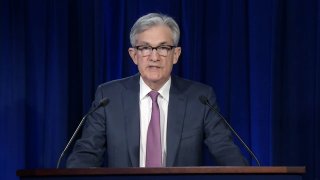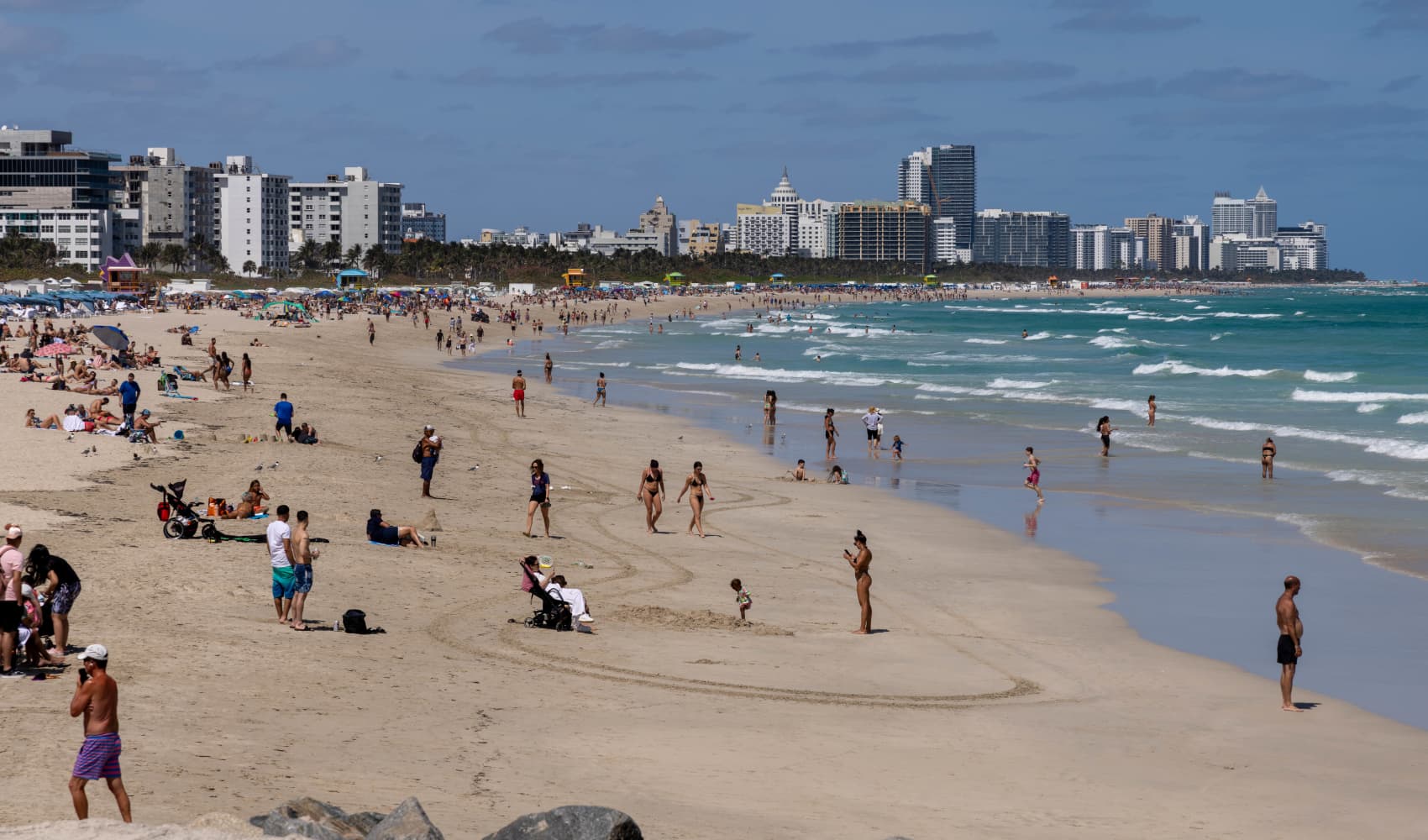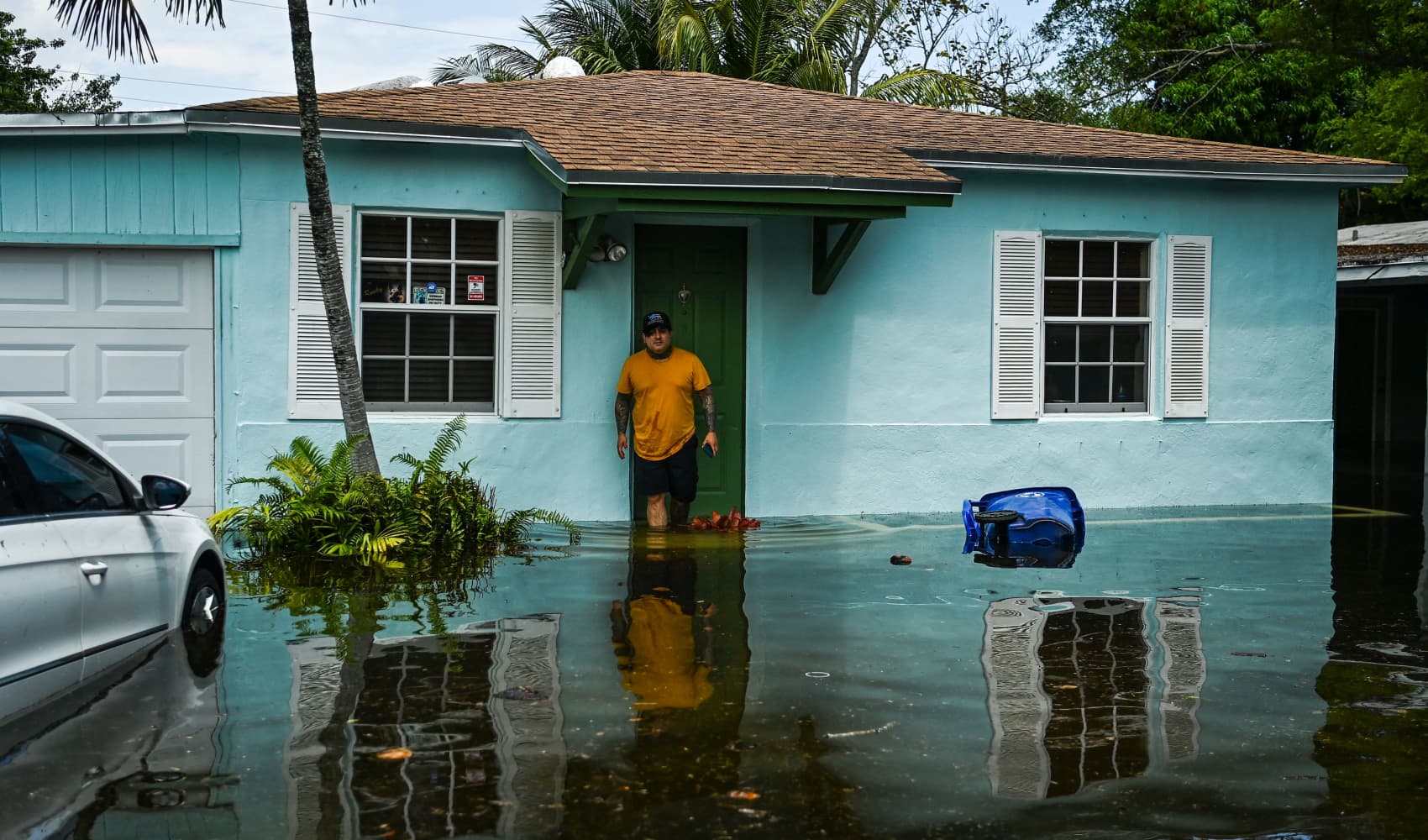
- The Fed projected gross domestic product to grow by 6.5% in 2021.
- The 10-year interest rate hit its highest level since January 2020 on Wednesday.
The 10-year U.S. Treasury yield slipped from its earlier highs on Wednesday after the Federal Reserve and Chair Jerome Powell indicated that the central bank expected strong economic growth this year but had no plans to hike its policy interest rate.
The yield on the benchmark 10-year Treasury note rose slightly on the day to 1.41%. The yield on the 30-year Treasury bond climbed about 2 basis point to 2.411%. Yields move inversely to prices (1 basis point equals 0.01%).
Get Connecticut local news, weather forecasts and entertainment stories to your inbox. Sign up for NBC Connecticut newsletters.
The 10-year hit a high of 1.689% earlier in the session, its highest level since Jan. 24, 2020. The 30-year also hit its highest levels since early last year. The 10-year was trading nearly 1.66% when the Fed announcement was released at 2 p.m., and rates drifted lower as Fed Chair Jerome Powell reinforced a dovish stance for the central bank during his afternoon press conference.
The Federal Open Market Committee voted to keep its benchmark interest rate near zero and to continue its asset buying program of at least $120 billion in bonds a month. The central bank indicated that it did not expect to hike the interest rate through 2023.
The Fed also said that it expected gross domestic product growth to reach 6.5% this year and for core inflation to reach 2.2%, with both measures then projected to cool off in 2022. Those projections, combined with the expected path of the benchmark interest rate, shows that the central bank is sticking to its plan of letting the economy run hot as the U.S. recovers from the pandemic.
Money Report
"Basically the bottom line is the reflation trade remains intact," said Jim Caron, head of global macro strategy at Morgan Stanley Investment Management. "There was no signal of a premature rate hike...Importantly the Fed does not see inflation really rising materially above 2% throughout their forecast horizon, through 2023. Most people think the threshold to raise rates is 2.5%, and the Fed is saying we're below that."
Shorter term interest rates, including the 2-year Treasury yield, were slightly lower on the day.
The 10-year Treasury yield has risen rapidly recently amid concerns about potential growth in inflation, as economies reopen and recover from the coronavirus pandemic. The 10-year yield started the year at 0.9%.
However, Ian Shepherdson, chief economist at Pantheon Macroeconomics, told CNBC's "Squawk Box Europe" on Wednesday morning that the yield was "still close to zero in real terms."
When asked directly about the level of the 10-year, Powell said he would be concerned by "disorderly" conditions in markets but viewed the current bond prices to still be in an appropriate range.
"We're still a long way from our goals, and it's important that financial conditions do remain accommodative to support the achievement of those goals," Powell said. "If you look at various indexes of financial conditions, what they do show is financial conditions overall to be highly accommodative, and that is appropriate."
On the economic data front, the Commerce Department said Wednesday morning that housing starts fell sharply in February, a month marked by severe weather across much of the United States.
An auction were held Wednesday before the Fed announcement for $35 billion of 119-day bills.
— CNBC's Maggie Fitzgerald, Patti Domm and Jeff Cox contributed to this report.






